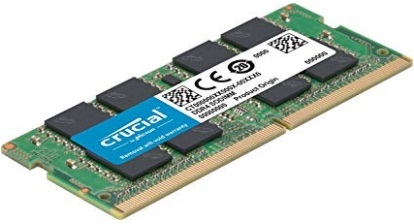SDRAM Types: DDR, DDR2, DDR3, DDR4

Virtually all memory modules use some type of dynamic RAM (DRAM) chips. DRAM requires frequent
recharges of memory (also referred to as refresh) to retain its contents.
SRAM
Static random-access memory (SRAM) is RAM that does not need to be periodically refreshed. Memory
refreshing is common to other types of RAM and is basically the act of reading information from
a specific area of memory and immediately rewriting that information back to the same area without modifying it.
Due to SRAM's architecture, it does not require this refresh. You will find SRAM being used as
cache memory for CPUs, as buffers within hard drives, and as temporary storage for LCD screens.
Normally, SRAM is soldered directly to a printed circuit board (PCB) or integrated directly to
a chip. This means that you probably won't be replacing SRAM. SRAM is faster than — and is
usually found in smaller quantities than—its distant cousin DRAM.
SDRAM
Synchronous DRAM (SDRAM) was the first type of memory to run in sync with the processor bus
(the connection between the processor, or CPU, and other components on the motherboard).
Most 168-pin DIMM modules use SDRAM memory. To determine whether a DIMM module contains SDRAM memory,
check its speed markings. SDRAM memory is rated by bus speed (PC66 equals 66MHz bus speed; PC100
equals 100MHz bus speed; and PC133 equals 133MHz bus speed). All SDRAM modules have a one-bit
prefetch buffer and perform one transfer per clock cycle.
Depending on the specific module and motherboard chipset combination, PC133 modules can sometimes
be used on systems that are designed for PC100 modules.
DDR SDRAM
The second generation of systems running synchronous DRAM use double data rate SDRAM (DDR SDRAM).
DDR SDRAM performs two transfers per clock cycle (instead of one, as with regular SDRAM) and features
a two-bit prefetch buffer. 184-pin DIMM memory modules use DDR SDRAM chips.
While DDR SDRAM is sometimes rated in MHz, it is more often rated by throughput (MBps). Common speeds
for DDR SDRAM include PC1600 (200MHz/1600Mbps), PC2100 (266MHz/2100Mbps), PC2700 (333MHz/2700Mbps),
and PC3200 (400MHz/3200Mbps), but other speeds are available from some vendors.
DDR2 SDRAM
Double data rate 2 SDRAM (DDR2 SDRAM) is the successor to DDR SDRAM. DDR2 SDRAM runs its external data
bus at twice the speed of DDR SDRAM and features a four-bit prefetch buffer, enabling faster performance.
However, DDR2 SDRAM memory has greater latency than DDR SDRAM memory. Latency is a measure of how long
it takes to receive information from memory; the higher the number, the greater the latency. Typical
latency values for mainstream DDR2 memory are CL=5 and CL=6, compared to CL=2.5 and CL=3 for DDR memory.
240-pin memory modules use DDR2 SDRAM.
DDR2 SDRAM memory might be referred to by the effective memory speed of the memory chips on the module
(the memory clock speed x4 or the I/O bus clock speed x2) — for example, DDR2-533 (133MHz memory clock x4
or 266MHz I/O bus clock x2) = 533MHz) — or by module throughput (DDR2-533 is used in PC2-4200 modules,
which have a throughput of more than 4200Mbps). PC2- indicates the module uses DDR2 memory;
PC- indicates the module uses DDR memory.
Other common speeds for DDR2 SDRAM modules include PC2-3200 (DDR2-400; 3200Mbps throughput); PC2-5300
(DDR2-667); PC2-6400 (DDR2-800); and PC2-8500 (DDR2-1066).
| 
